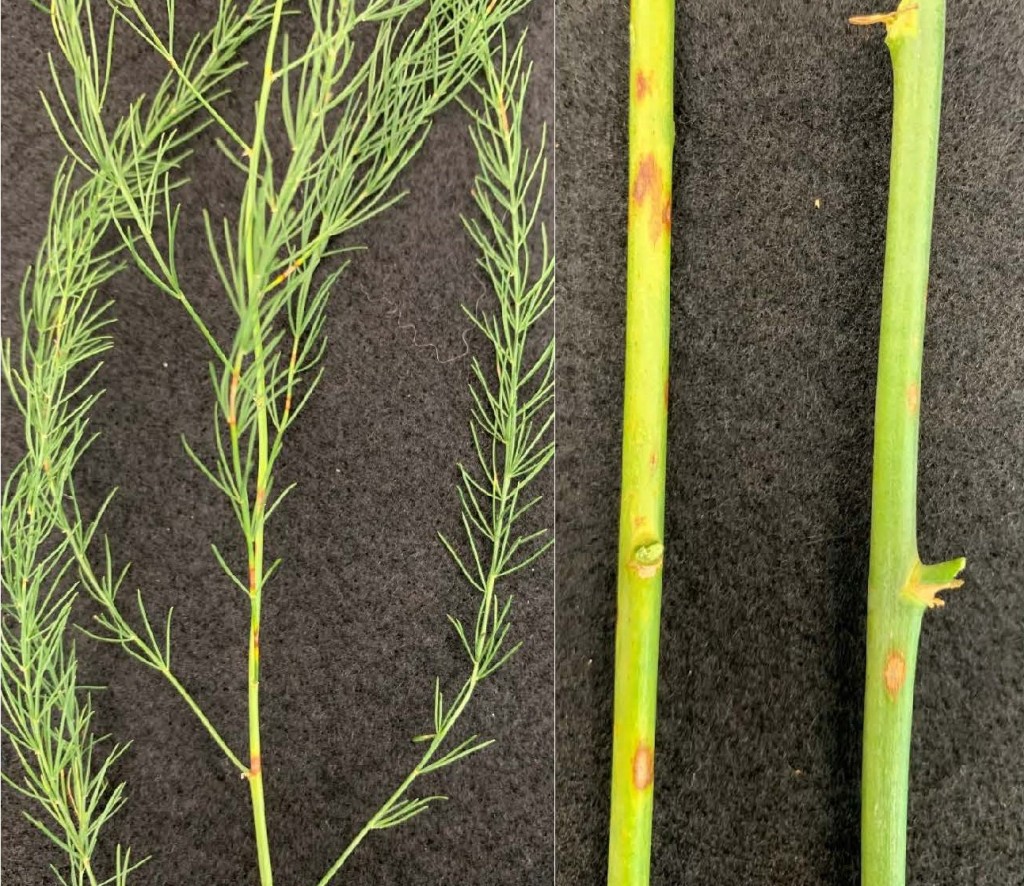From Clemson Plant Pathologist Tony Keinath.
Last October, purple spot was found on asparagus ferns in South Carolina. Information about the disease can be found in this excellent fact sheet from Oklahoma State. Because of the 6-month pre-harvest interval for fungicides sprayed on asparagus, it’s time for asparagus growers to scout their fields or make the first fungicide application if they have seen purple spot in the past.

Purple spot is a common fall disease of asparagus ferns in the Southeast because of the long (12-hour) dew periods in the fall. The spots are small and reddish-brown with a dark outline. The tiny black dots in the center of the lesions are the fruiting bodies that the fungus, Stemphylium vesicarium, is producing as it prepares for winter survival. If purple spot is present on the ferns in the fall, you might see it on the spears next spring.
Fungicides to prevent purple spot are listed in the 2022 Southeastern Vegetable Crop Handbook on page 210. Because asparagus is a perennial crop, the Pre-Harvest Interval (PHI) is much longer than with annual vegetable crops. Note the 6-month (180 to 190 days) PHI for Flint, Dexter Max, and chlorothalonil. Azoxystrobin products can be applied up to 100 days before harvest. Use the earliest harvest date you have seen to calculate how long sprays can be applied this fall.
Note that azoxystrobin (Quadris or generics; see the list of generic fungicides on page 316 of the Handbook), Dexter MAX, and Flint must be rotated with chlorothalonil (Bravo or generics) on a 1:1 schedule. Note that each fungicide is limited to three applications, for a total of six applications per season for all fungicides counted together. The OSU fact sheet recommends beginning preventative fungicide applications in July.